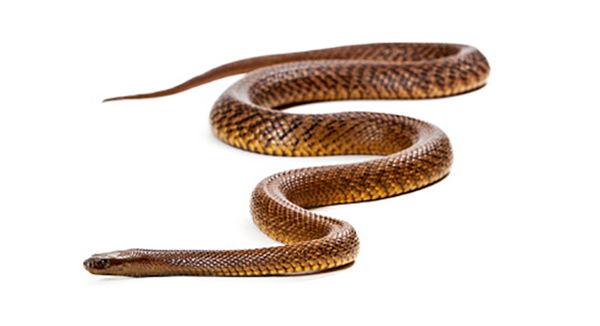An Unwelcome Sight
A rattling in the brush. A flash of brown and black in your backyard. A hiss that makes your stomach tangle up in knots.
Few animals cause people to panic like snakes. Usually it’s a waste of precious energy because most snakes aren’t harmful to humans. They’ll usually slither away at the sight of us. But harmful or not, these scaly serpents sure know how to cause a commotion when they suddenly show up!
So what makes some snakes venomous (VEN-um-us)? And how did they get that way if God made the world “very good” in Genesis 1:31?
Now, that’s quite a tail . . . uh, tale.
Incredible Venom

Vipers store their venom in glands behind each eye. When needed, this venom flows down special tubes into the fangs.
Snake venom has an incredible design. That may sound crazy, but it’s true!
Venom is a dangerous liquid that requires a body that’s specially equipped to make, store, and deliver a mean bite. For example, some snakes have fangs that “swing out” when the animal strikes. Those teeth work just like the shot you’d get at the doctor’s office. Instead of a flu shot, though, snakes inject venom from special glands in the back of their upper jaw.
What’s more, snake venom can work in different ways to help the slithery animal get its dinner. Some of these toxins attack the nerves, some attack the blood, and others target a wide range of tissues. Some venoms can do all three.
Snakes even know how much venom they’ll need, depending on the size of the snack! Some defensive strikes inject hardly anything at all. These so-called dry bites warn the predator, “Don’t mess with me!”

Vipers have the longest fangs of any snake, up to 2 inches.
A Body Made for the Hunt
In addition to venom, God packed snakes full of other amazing features that help them hunt. For example, snakes don’t flick out their tongues to be rude. Instead, they’re licking the air so they can wipe the odors on special smelling organs on the roof of their mouth. Water snakes can even smell a delicious meal approaching underwater.
Snake jaws are also very sensitive. When the critter slithers along the ground, those jaws can feel the vibrations caused by a skittering mouse.
Despite their lack of limbs, snakes have no trouble zipping around. They’re quite speedy on all types of terrain—from deserts to oceans to trees. Some of them can even scoot around underground.

The inland taipan is widely regarded as the most venomous snake in the world. However, they are relatively shy and live in the remote regions of Australia, so they are rarely encountered.
Deadly from the Beginning?
Serpents first show up in the Bible in Genesis 3. And the first impression isn’t a good one. After all, Satan used a serpent to tempt Eve into disobeying God.
So were snakes deadly from the beginning?
Not at all! In God’s “very good” creation of Genesis 1, snakes did not injure or kill with venom. Snakes also didn’t eat other animals because there was no death. Instead, God gave green plants for every animal to eat (Genesis 1:30).
But after the fall, when Adam disobeyed God, everything was much different. Some scientists think that harmless features in snakes became harmful because of the curse. That’s not such a bad thing for the snake. In a fallen world, venom and other features allow snakes to catch their food and protect themselves.
Does anything good come from venom? Well, snakes do us a favor by keeping rodents from becoming pests on our farms and in our homes. And snake venom has also shown promise in helping with pain relief and treating diseases, including cancer. Maybe one day you could make “hiss-tory” by finding a cure from venom.
Kids Answers Magazine
Snakes!
God equipped snakes with venom to thrive in a fallen world.
Browse Kids Issue- © 2025 Answers in Genesis
- Privacy Policy
- Contact
- About

